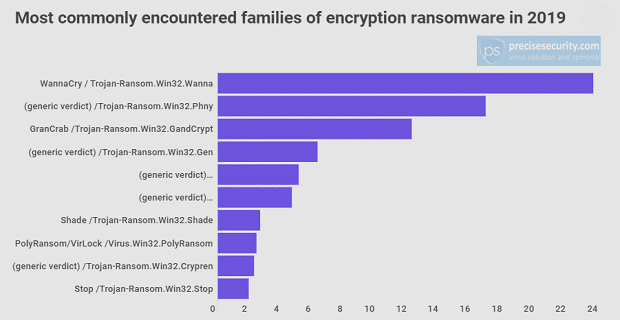
According to PreciseSecurity.com research, 23.56 % of all encryption ransomware attacks during 2019 had encountered the WannaCry virus, making it the most ordinary type of hack in the last year.
WannaCry Attack Caused $4 Billion Damage Globally
The number of ransomware attacks against government agencies, organizations in the healthcare, energy sectors, and education continues to rise. While some simple ransomware may lock the system in a way that is not difficult for a knowledgeable person to reverse, more advanced malware exploits a technique called crypto-viral extortion.
WannaCry targets computers using Microsoft Windows as an operating system. It encrypts data and demands payment of a ransom in the cryptocurrency Bitcoin for its return. According to the estimates, the WannaCry ransomware attack hit around 230.000 computers globally, causing $4 billion in losses all over the world.
Most of the computer users became victims of the WannaCry virus because of not updating their Microsoft Windows. Therefore, updating software and operating system regularly is an essential ransomware protection step.
Spam Emails Caused 67% of All Ransomware Infections in 2019
The 2019 data show that phishing scams were the most common cause of ransomware infection globally during the last year. More than 67% of MSP users reported ransomware attacks caused by spam and phishing emails. According to PreciseSecurity.com research, spam messages made 55 % of global email traffic during the last year, which explains the prevalence of this cause.
With a 36% share in the combined number of ransomware attacks during 2019, the lack of cybersecurity training was the second most common cause. Weak passwords led to another 30% of hacks. Poor user practices caused one-quarter of all ransomware attacks. Other ordinary reasons included malicious websites and clickbait.
